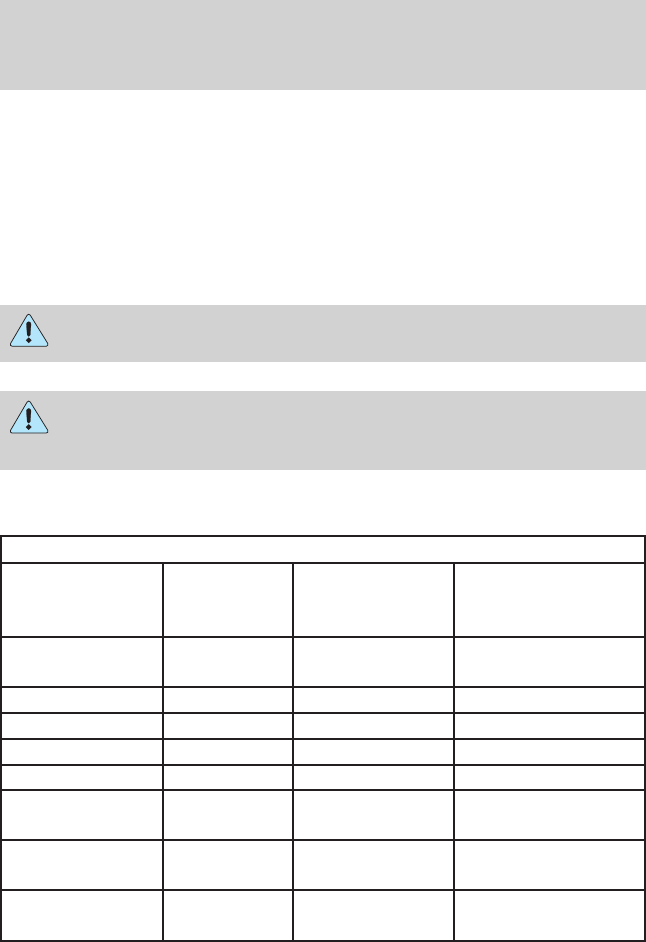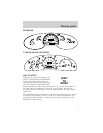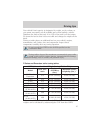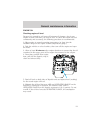
Your vehicle’s load capacity is designated by weight, not by volume, so
you cannot necessarily use all available space when loading a vehicle.
Distribute the load so that only 10 to 15% of the total is on the tongue.
Tie down the load so that it does not shift and change the weight on the
hitch.
Towing a trailer places an additional load on your vehicle’s engine,
transmission, axle, brakes, tires and suspension. Inspect these
components carefully after any towing operation.
Do not exceed the GVWR or the GAWR specified on the
certification label.
Towing trailers beyond the maximum recommended gross trailer
weight could result in engine damage, transmission/axle damage,
structural damage, loss of control, and personal injury.
F-Series and Excursion trailer towing tables
GCWR (Gross Combined Weight Rating)/Trailer Weights
Model
Rear axle
ratio
Maximum
GCWR-kg
(lbs.)
Maximum trailer
weight-kg (lbs.)
1
F-250 and
Excursion
3.73 9 072 (20 000) 4 536 (10 000)
F-250 4.10 9 072 (20 000) 4 536 (10 000)
F-350 3.73 9 072 (20 000) 4 536 (10 000)
F-350 (DRW) 4.10 9 072 (20 000) 4 536 (10 000)
F-450 4.88 11 794 (26 000) 4 536 (10 000)
F-550
(17 500 GVW)
4.88 11 794 (26 000) 4 536 (10 000)
F-550
(19 000 GVW)
4.88 11 794 (26 000) 4 536 (10 000)
F-550
(19 000 GVW)
4.88 13 608 (30 000) 4 536 (10 000)
1
Conventional/Class IV trailer hitch only. Fifth wheel trailer maximum
weights can be calculated by subtracting the GVW from the GCWR.
Driving tips
15


















